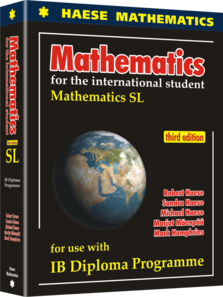About the Book
Year Published: 2012
Page Count: 760
ISBN: 978-1-921972-08-9 (9781921972089)
Online ISBN: 978-1-921972-67-6 (9781921972676)

Discontinued Editions
Stock available from Australian warehouse only.
Year Published: 2012
Page Count: 760
ISBN: 978-1-921972-08-9 (9781921972089)
Online ISBN: 978-1-921972-67-6 (9781921972676)
| SYMBOLS AND NOTATION USED IN THIS BOOK | 10 | ||
| BACKGROUND KNOWLEDGE | 16 | ||
| A | Surds and radicals | CD | |
| B | Scientific notation (standard form) | CD | |
| C | Number systems and set notation | CD | |
| D | Algebraic simplification | CD | |
| E | Linear equations and inequalities | CD | |
| F | Modulus or absolute value | CD | |
| G | Product expansion | CD | |
| H | Factorisation | CD | |
| I | Formula rearrangement | CD | |
| J | Adding and subtracting algebraic fractions | CD | |
| K | Congruence and similarity | CD | |
| L | Pythagoras' theorem | CD | |
| M | Coordinate geometry | CD | |
| N | Right angled triangle trigonometry | CD | |
| Facts about number sets | CD | ||
| Summary of circle properties | CD | ||
| Summary of measurement facts | CD | ||
| GRAPHICS CALCULATOR INSTRUCTIONS | 16 | ||
| Casio fx-9860G PLUS | CD | ||
| Casio fx-CG20 | CD | ||
| Texas Instruments TI-84 Plus | CD | ||
| Texas Instruments TI-nspire | CD | ||
| 1 | QUADRATICS | 17 | |
| A | Quadratic equations | 19 | |
| B | The discriminant of a quadratic | 25 | |
| C | Quadratic functions | 28 | |
| D | Finding a quadratic from its graph | 38 | |
| E | Where functions meet | 42 | |
| F | Problem solving with quadratics | 44 | |
| G | Quadratic optimisation | 47 | |
| Review set 1A | 49 | ||
| Review set 1B | 50 | ||
| Review set 1C | 51 | ||
| 2 | FUNCTIONS | 53 | |
| A | Relations and functions | 54 | |
| B | Function notation | 57 | |
| C | Domain and range | 59 | |
| D | Composite functions | 64 | |
| E | Sign diagrams | 66 | |
| F | Rational functions | 69 | |
| G | Inverse functions | 73 | |
| Review set 2A | 77 | ||
| Review set 2B | 78 | ||
| Review set 2C | 80 | ||
| 3 | EXPONENTIALS | 81 | |
| A | Exponents | 82 | |
| B | Laws of exponents | 84 | |
| C | Rational exponents | 87 | |
| D | Algebraic expansion and factorisation | 90 | |
| E | Exponential equations | 92 | |
| F | Exponential functions | 94 | |
| G | Growth and decay | 98 | |
| H | The natural exponential e^x | 101 | |
| Review set 3A | 105 | ||
| Review set 3B | 106 | ||
| Review set 3C | 107 | ||
| 4 | LOGARITHMS | 109 | |
| A | Logarithms in base 10 | 110 | |
| B | Logarithms in base a | 113 | |
| C | Laws of logarithms | 116 | |
| D | Natural logarithms | 120 | |
| E | Exponential equations using logarithms | 123 | |
| F | The change of base rule | 125 | |
| G | Graphs of logarithmic functions | 126 | |
| H | Growth and decay | 130 | |
| Review set 4A | 132 | ||
| Review set 4B | 133 | ||
| Review set 4C | 134 | ||
| 5 | TRANSFORMING FUNCTIONS | 135 | |
| A | Graphing functions | 136 | |
| B | Transformation of graphs | 140 | |
| C | Translations y=f(x)+b and y=f(x-a) | 141 | |
| D | Stretches y=pf(x), p>0 and y=f(qx), q>0 | 143 | |
| E | Reflections y=-f(x) and y=f(-x) | 144 | |
| F | Miscellaneous transformations | 146 | |
| Review set 5A | 148 | ||
| Review set 5B | 149 | ||
| Review set 5C | 150 | ||
| 6 | SEQUENCES AND SERIES | 151 | |
| A | Number sequences | 152 | |
| B | The general term of a number sequence | 153 | |
| C | Arithmetic sequences | 155 | |
| D | Geometric sequences | 159 | |
| E | Series | 166 | |
| F | Arithmetic series | 167 | |
| G | Geometric series | 170 | |
| Review set 6A | 176 | ||
| Review set 6B | 176 | ||
| Review set 6C | 177 | ||
| 7 | THE BINOMIAL EXPANSION | 179 | |
| A | Binomial expansions | 180 | |
| B | The binomial coefficient (nCr) | 183 | |
| C | The binomial theorem | 185 | |
| Review set 7A | 187 | ||
| Review set 7B | 188 | ||
| 8 | THE UNIT CIRCLE AND RADIAN MEASURE | 189 | |
| A | Radian measure | 190 | |
| B | Arc length and sector area | 193 | |
| C | The unit circle and the trigonometric ratios | 196 | |
| D | Applications of the unit circle | 201 | |
| E | Multiples of π/6 and π/4 | 205 | |
| F | The equation of a straight line | 209 | |
| Review set 8A | 210 | ||
| Review set 8B | 211 | ||
| Review set 8C | 212 | ||
| 9 | NON-RIGHT ANGLED TRIANGLE TRIGONOMETRY | 213 | |
| A | Areas of triangles | 214 | |
| B | The cosine rule | 217 | |
| C | The sine rule | 220 | |
| D | Using the sine and cosine rules | 224 | |
| Review set 9A | 228 | ||
| Review set 9B | 229 | ||
| Review set 9C | 230 | ||
| 10 | TRIGONOMETRIC FUNCTIONS | 231 | |
| A | Periodic behaviour | 232 | |
| B | The sine function | 236 | |
| C | Modelling using sine functions | 243 | |
| D | The cosine function | 246 | |
| E | The tangent function | 248 | |
| F | General trigonometric functions | 251 | |
| Review set 10A | 253 | ||
| Review set 10B | 253 | ||
| Review set 10C | 254 | ||
| 11 | TRIGONOMETRIC EQUATIONS AND IDENTITIES | 255 | |
| A | Trigonometric equations | 256 | |
| B | Using trigonometric models | 263 | |
| C | Trigonometric relationships | 265 | |
| D | Double angle formulae | 268 | |
| E | Trigonometric equations in quadratic form | 271 | |
| Review set 11A | 272 | ||
| Review set 11B | 273 | ||
| Review set 11C | 274 | ||
| 12 | VECTORS | 275 | |
| A | Vectors and scalars | 276 | |
| B | Geometric operations with vectors | 279 | |
| C | Vectors in the plane | 286 | |
| D | The magnitude of a vector | 288 | |
| E | Operations with plane vectors | 290 | |
| F | The vector between two points | 293 | |
| G | Vectors in space | 296 | |
| H | Operations with vectors in space | 300 | |
| I | Parallelism | 304 | |
| J | The scalar product of two vectors | 307 | |
| Review set 12A | 314 | ||
| Review set 12B | 315 | ||
| Review set 12C | 317 | ||
| 13 | VECTOR APPLICATIONS | 319 | |
| A | Problems involving vector operations | 320 | |
| B | Lines in 2-D and 3-D | 322 | |
| C | The angle between two lines | 326 | |
| D | Constant velocity problems | 328 | |
| E | The shortest distance from a line to a point | 331 | |
| F | Intersecting lines | 335 | |
| G | Relationships between lines | 337 | |
| Review set 13A | 340 | ||
| Review set 13B | 341 | ||
| Review set 13C | 342 | ||
| 14 | INTRODUCTION TO DIFFERENTIAL CALCULUS | 343 | |
| A | Limits | 345 | |
| B | Limits at infinity | 347 | |
| C | Rates of change | 350 | |
| D | The derivative function | 353 | |
| E | Differentiation from first principles | 355 | |
| Review set 14A | 357 | ||
| Review set 14B | 358 | ||
| Review set 14C | 358 | ||
| 15 | RULES OF DIFFERENTIATION | 359 | |
| A | Simple rules of differentiation | 360 | |
| B | The chain rule | 364 | |
| C | The product rule | 367 | |
| D | The quotient rule | 369 | |
| E | Derivatives of exponential functions | 371 | |
| F | Derivatives of logarithmic functions | 375 | |
| G | Derivatives of trigonometric functions | 378 | |
| H | Second and higher derivatives | 381 | |
| Review set 15A | 383 | ||
| Review set 15B | 383 | ||
| Review set 15C | 384 | ||
| 16 | PROPERTIES OF CURVES | 385 | |
| A | Tangents and normals | 386 | |
| B | Increasing and decreasing functions | 392 | |
| C | Stationary points | 397 | |
| D | Inflections and shape | 401 | |
| Review set 16A | 409 | ||
| Review set 16B | 410 | ||
| Review set 16C | 411 | ||
| 17 | APPLICATIONS OF DIFFERENTIAL CALCULUS | 413 | |
| A | Kinematics | 414 | |
| B | Rates of change | 423 | |
| C | Optimisation | 428 | |
| Review set 17A | 437 | ||
| Review set 17B | 438 | ||
| Review set 17C | 439 | ||
| 18 | INTEGRATION | 441 | |
| A | The area under a curve | 442 | |
| B | Antidifferentiation | 448 | |
| C | The fundamental theorem of calculus | 449 | |
| D | Integration | 454 | |
| E | Rules for integration | 457 | |
| F | Integrating f(ax+b) | 462 | |
| G | Integration by substitution | 465 | |
| H | Definite integrals | 468 | |
| Review set 18A | 472 | ||
| Review set 18B | 473 | ||
| Review set 18C | 473 | ||
| 19 | APPLICATIONS OF INTEGRATION | 475 | |
| A | The area under a curve | 476 | |
| B | The area between two functions | 479 | |
| C | Kinematics | 483 | |
| D | Solids of revolution | 489 | |
| Review set 19A | 494 | ||
| Review set 19B | 496 | ||
| Review set 19C | 497 | ||
| 20 | DESCRIPTIVE STATISTICS | 499 | |
| A | Key statistical concepts | 500 | |
| B | Measuring the centre of data | 505 | |
| C | Measuring the spread of data | 517 | |
| D | Boxplots | 521 | |
| E | Cumulative frequency graphs | 526 | |
| F | Variance and standard deviation | 531 | |
| Review set 20A | 539 | ||
| Review set 20B | 541 | ||
| Review set 20C | 542 | ||
| 21 | LINEAR MODELLING | 545 | |
| A | Correlation | 546 | |
| B | Pearson's correlation coefficient | 550 | |
| C | Line of best fit | 554 | |
| D | The least squares regression line | 557 | |
| E | Interpolation and extrapolation | 558 | |
| Review set 21A | 562 | ||
| Review set 21B | 563 | ||
| Review set 21C | 565 | ||
| 22 | PROBABILITY | 567 | |
| A | Experimental probability | 569 | |
| B | Sample space | 574 | |
| C | Theoretical probability | 575 | |
| D | Tables of outcomes | 579 | |
| E | Compound events | 581 | |
| F | Tree diagrams | 585 | |
| G | Sampling with and without replacement | 588 | |
| H | Sets and Venn diagrams | 591 | |
| I | Laws of probability | 597 | |
| J | Independent events | 601 | |
| Review set 22A | 604 | ||
| Review set 22B | 604 | ||
| Review set 22C | 606 | ||
| 23 | DISCRETE RANDOM VARIABLES | 607 | |
| A | Discrete random variables | 608 | |
| B | Discrete probability distributions | 610 | |
| C | Expectation | 614 | |
| D | The binomial distribution | 618 | |
| Review set 23A | 626 | ||
| Review set 23B | 627 | ||
| Review set 23C | 628 | ||
| 24 | THE NORMAL DISTRIBUTION | 629 | |
| A | The normal distribution | 631 | |
| B | Probabilities using a calculator | 636 | |
| C | The standard normal distribution (Z-distribution) | 639 | |
| D | Quantiles or k-values | 644 | |
| Review set 24A | 648 | ||
| Review set 24B | 649 | ||
| Review set 24C | 650 | ||
| 25 | MISCELLANEOUS QUESTIONS | 651 | |
| A | Non-calculator questions | 652 | |
| B | Calculator questions | 665 | |
| ANSWERS | 679 | ||
| INDEX | 755 | ||


Sandra completed a Bachelor of Science at the University of Adelaide, majoring in Pure Mathematics and Statistics. She taught at Underdale High School and Westminster School before founding Haese and Harris Publications (now Haese Mathematics), together with husband Robert (Bob) and colleague Kim Harris.
What drew you to the field of mathematics?
I always found mathematics the easiest subject at school. I’m not sure why. I intended to study Chemistry at university, but found I didn’t enjoy it as much as I thought I would – so I came back to mathematics, and have been involved with it ever since.
What motivated you to switch from teaching to writing mathematics books?
Bob used to write notes for his class. Other teachers at the school used the notes, then teachers at other schools started asking for them. Eventually Bob said, “Well, I might as well start writing textbooks!”
Initially, I was proofreading. As the workload increased, I began editing as well as proofreading. It just gradually became a full-time job, between writing material, editing and proofreading it, and then distributing the books. These days, Michael does the editing and I do proofreading and audio.
How has the field of textbook publishing changed in the years since you started?
When we started, text was typed and worked solutions were handwritten. Bob would draw any graphics by hand.
We moved to typesetting, but writing a mathematics textbook with the printing tools available presented its own difficulties. For example, symbols had to be copied, cut and pasted by hand onto the original pages, which was very tedious and time-consuming! Fractions were also problematic: we would type a line containing all the numerators, and then a line underneath for all the denominators.
Now it’s all done by computers, which is very much easier, and quicker!
What interests you outside mathematics?
I own a few alpacas. I enjoy my garden - I don’t do much in it, but I enjoy it! I like listening to music; mainly classical, but I enjoy other genres as well.
I really love to travel. The scenery, the history of a place, its architecture, its art – all of those things fascinate me. As a result I also enjoy photography; I like taking pictures of the things I’ve seen and places I’ve experienced.

Michael completed a Bachelor of Science at the University of Adelaide, majoring in Infection and Immunity, and Applied Mathematics. He studied laminar heat flow as part of his Honours in Applied Mathematics, and finished a PhD in high speed fluid flows in 2001. He has been the principal editor for Haese Mathematics since 2008.
What motivates you to write mathematics books?
My passion is for education as a whole, rather than just mathematics. In Australia I think it is too easy to take education for granted, because it is seen as a right but with too little appreciation for the responsibility that goes with it. But the more I travel to places where access to education is limited, the more I see children who treat it as a privilege, and the greater the difference it makes in their lives. But as far as mathematics goes, I grew up with mathematics textbooks in pieces on the kitchen table, and so I guess it continues a tradition.
What do you aim to achieve in writing?
I think a few things:
What interests you outside mathematics?
Lots of things! Horses, show jumping and course design, alpacas, badminton, running, art, history, faith, reading, hiking, photography ....


Mark has a Bachelor of Science (Honours), majoring in Pure Mathematics, and a Bachelor of Economics, both of which were completed at the University of Adelaide. He studied public key cryptography for his Honours in Pure Mathematics. He started with the company in 2006, and is currently the writing manager for Haese Mathematics.
What got you interested in mathematics? How did that lead to working at Haese Mathematics?
I have always enjoyed the structure and style of mathematics. It has a precision that I enjoy. I spend an inordinate amount of my leisure time reading about mathematics, in fact! To be fair, I tend to do more reading about the history of mathematics and how various mathematical and logic puzzles work, so it is somewhat different from what I do at work.
How did I end up at Haese Mathematics?
I was undertaking a PhD, and I realised that what I really wanted to do was put my knowledge to use. I wanted to pass on to others all this interesting stuff about mathematics. I emailed Haese Mathematics (Haese and Harris Publications as they were known back then), stating that I was interested in working for them. As it happened, their success with the first series of International Baccalaureate books meant that they were looking to hire more people at the time. I consider myself quite lucky!
What are some interesting things that you get to do at work?
On an everyday basis, it’s a challenge (but a fun one!) to devise interesting questions for the books. I want students to have questions that pique their curiosity and get them thinking about mathematics in a different way. I prefer to write questions that require students to demonstrate that they understand a concept, rather than relying on rote memorisation.
When a new or revised syllabus is released for a curriculum that we write for, a lot of work goes into devising a structure for the book that addresses the syllabus. The process of identifying what concepts need to be taught, organising those concepts into an order that makes sense from a teaching standpoint, and finally sourcing and writing the material that addresses those concepts is very involved – but so rewarding when you hold the finished product in your hands, straight from the printer.
What interests you outside mathematics?
Apart from the aforementioned recreational mathematics activities, I play a little guitar, and I enjoy playing badminton and basketball on a social level.
A complete electronic copy of the textbook, with interactive, animated, and/or printable extras.
Animated worked examples with step-by-step, voiced explanations.
Activities to guide Theory of Knowledge projects.
Graphics Calculator Instructions
For Casio fx-9860G Plus, Casio fx-CG20, TI-84 Plus, and TI-nspire
Theory of Knowledge is a core requirement in the International Baccalaureate Diploma Programme.
Students are encouraged to think critically and challenge the assumptions of knowledge. Students should be able to analyse different ways of knowing and kinds of knowledge, while considering different cultural and emotional perceptions, fostering an international understanding.
Graphics calculator instructions for Casio fx-9860G Plus, Casio fx-CG20, TI-84 Plus, and TI-nspire are included with this textbook. The textbook will either have comprehensive instructions at the start of the book, specific instructions available from icons located throughout, or both. The extensive use of graphics calculators and computer packages throughout the book enables students to realise the importance, application, and appropriate use of technology.
This book offers SELF TUTOR for every worked example. On the electronic copy of the textbook, access SELF TUTOR by clicking anywhere on a worked example to hear a step-by-step explanation by a teacher. This is ideal for catch-up and revision, or for motivated students who want to do some independent study outside school hours.

This book is available on electronic devices through our Snowflake learning platform. This book includes 27 months of Snowflake access, featuring a complete electronic copy of the textbook.
Where relevant, Snowflake features include interactive geometry, graphing, and statistics software, demonstrations, games, spreadsheets, and a range of printable worksheets, tables, and diagrams. Teachers are provided with a quick and easy way to demonstrate concepts, and students can discover for themselves and re-visit when necessary.
Register your interest for information related to Haese Mathematics products